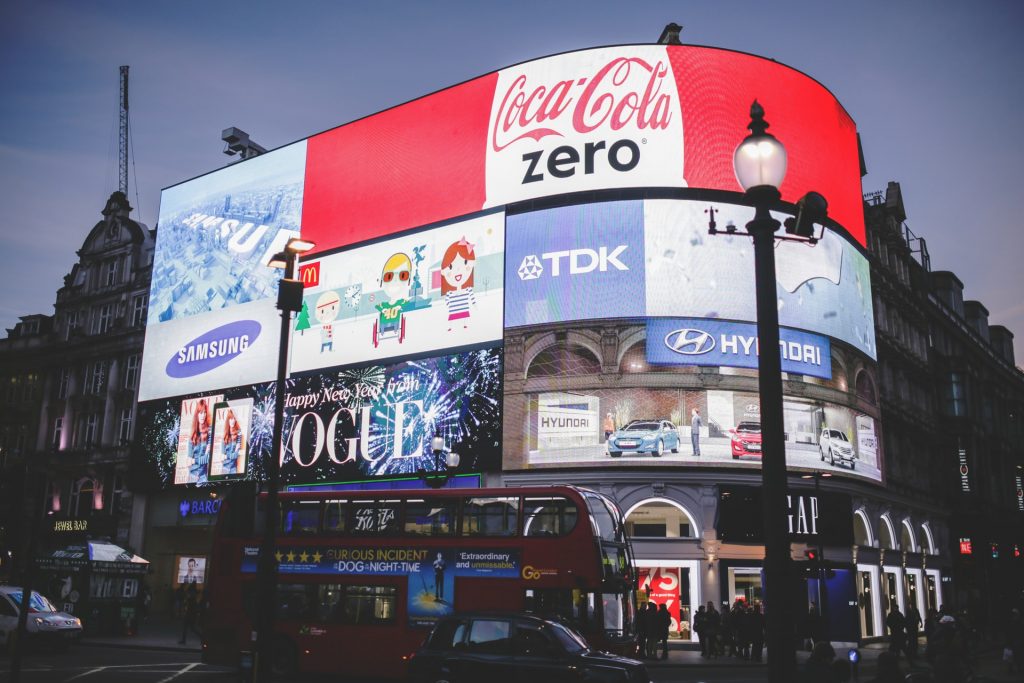Sex sells – that’s been the overriding message for businesses keen to advertise their services almost since commercial advertising was invented. But are consumers beginning to look beyond the stereotypes which have held our gaze for decades?
By Darren Parkin
PERFUME ads have long been the pinnacle of using lithe, sexy and downright jaw-droppingly beautiful people in their adverts – whether that’s been on screen or in print.
A well-tanned, stunning human being is often draped across a sun-kissed rock near an equally attractive beach as they pose or entangle themselves with their surroundings, more often than not looking down a camera lens as if they are preparing to make love to it. But it is the consumer who invariably ends up being seduced – targeted by a cynical industry which knows how to stir up a sense of aspiration in a customer base hell-bent on looking, or at least feeling, albeit fleetingly, like the person with the genetic blessing of the good looks they witness on screen.
The public are, however, now growing increasingly wise to fact that smelling a certain way, driving a certain car, or wearing a certain brand of clothing will not change their body shape, facial features or hairstyle in any way whatsoever. After years of being duped into a false sense of perceived beauty, the customer is slowly calling the bluff of advertising chiefs the world over.
The revolution, which began in America, is now catching on across Europe and the rest of the world. Most recently, the UK’s ASA (Advertising Standards Authority) has announced itself as the standard bearer for a more ethical approach to advertising. From next year, the ASA will be implementing new levels of standards designed to ‘consider whether the stereotypes shown would reinforce assumptions that adversely limit how people see themselves, and how others see them’.
Explaining the move, the ASA’s chief executive Guy Parker stressed it was time for the business world to stand up and be counted in a world clearly attempting to abandon gender stereotypes and emerge from a period of inequality.
“Portrayals which reinforce outdated and stereotypical views on gender roles in society can play their part in driving unfair outcomes for people,” he says.
“While advertising is only one of many factors that contribute to unequal gender outcomes, tougher advertising standards can play an important role in tackling inequalities and improving outcomes for individuals, the economy and society as a whole.”
The move has been welcomed by many experts, including Karen Middleton who offered Business Vision a detailed explanation as to why the advertising industry needs to change its ways.
“This could not have come at a better time for the industry,” said the senior lecturer in marketing and sales at the University of Portsmouth.
“Companies have failed to see the evidence that’s been staring them in the face, and this ruling will push them down a path that should already be well worn.”
She continues…
The fact is that audiences are increasingly turned off by the narrow representations they see in advertising. This is particularly the case for women, who drive 70-80% of all consumer purchasing. And yet, still, women tend to be portrayed as secondary to men in adverts, often in domestic scenes and as physically perfect or sexual objects.
The Advertising Standards Authority (ASA) decision is based on conclusions drawn over many years of academic and industry studies which show that advertising often creates expectations about how people should look or behave according to their gender, and that these can be internalised by individuals of both sexes.
Advertising is designed to be persuasive, so it is no surprise that it influences our ideas of reality. Plus, its pervasiveness plays a big role in constructing identities, particularly in relation to gender. Despite wider gains in equality, intensified or stereotyped gender portrayals in advertising have survived – thanks, perhaps, to the simplicity of the message they represent.
This has helped to sustain old-fashioned gender interaction and sex roles in society. Both women and men, girls and boys, need to see better and more complex gender role models, which more closely match what they see in their daily experience.
Boost the bottom line
Advertisers and their corporate clients may be pleasantly surprised to hear that being forced into the 21st century by the ASA may also help their bottom line. There is a host of research to show that it makes simple business sense to eradicate unfair stereotypes from advertising. Here are four stats for businesses not driven by morals alone:
- Adverts which portray women equally, where the presentation is respectful, appropriate, and delivers a positive role model, improves purchase intention by 26% among all consumers, and 45% among women.
- Sponsored social media posts which focus on gender equality encourage 8-10% more favourable brand opinions than those that don’t.
- Women’s attitudes or ‘liking’ for brands using ads with sexual content is lower than for ads without.
- The effect of overt sexual appeals in advertising has been found to have no significant effect on purchase intention either way, but can have a small but significant negative effect on attitudes towards the brand.
Add to this the huge consumer purchasing role of women and we have to question why gender stereotypes in advertising have persisted for so long.
Grrr! Bisto
Advertising usually only has a short time frame to convey a message, and that means stereotyped depictions of gender offer a shorthand for telling brand and product stories. A typical ad format is to present consumer goods being used to fulfil everyday needs with a scene which represents a snapshot of everyday life, using perceived traditional family norms. Take the classic ‘Ahh! Bisto’ ads from the 1980s where it was always the mum making dinner and keeping the kids in check.
Most advertisers also follow a ‘beauty is best’ policy. This means adverts almost exclusively feature physically or sexually attractive models. The idea is that us lowly consumers will ascribe good-looking people with more successful lives and better personalities. Beautiful models promote products that offer the desirable characteristics we seek: if you’re trying to flog pricey cosmetics, show the customers’ radiant skin or thick, strong hair.
But when people see pictures of models in advertising, it starts a self-evaluation process, whereby idealised body images may negatively affect self-esteem. Media images which adhere to a ‘thin ideal’, or which are ‘hyper-masculine’ can spark body dissatisfaction and a sharp divide between someone’s self-perceived real and ideal body size.
Now, advertisers might not worry about that too much if people still buy the product, but that attack on self-esteem can in fact lead to negative attitudes towards the advert or the brand – and lower a consumer’s intention to purchase the product. Arguably, consumers have become savvier towards these aspirational versions of reality – and sceptical as to whether they are indeed attainable. The new ASA requirements not only make economic sense, they may also be an opportunity for the advertising industry to catch up with the rest of us.
One strategy to limit the threat to self-esteem from aspirational adverts comes from something called ‘indirect self-affirmation’. This is all about showing additional or alternative dimensions to the characters in ads, such as an emphasis on a woman’s intelligence or mothering skills, as well as physical beauty. Marketers are now finding that ads which offer a more balanced view give more positive effects.
One campaign doing just that was the Microsoft #MakeWhatsNext project, which sought to encourage girls into the STEM (Science, Technology, Engineering and Maths) workforce. It generated 184m media impressions, 73m video views – and love for the Microsoft brand spiked.
Of course, it’s not just campaigns focused on pro-equality issues that are important. My research intends to show that by creating empathy and reducing social distance, depicting women more authentically builds closer relationships with consumers. But one thing seems already crystal clear, following the ASA’s guidance and using more gender balanced images is the way forward for all advertisers.

































